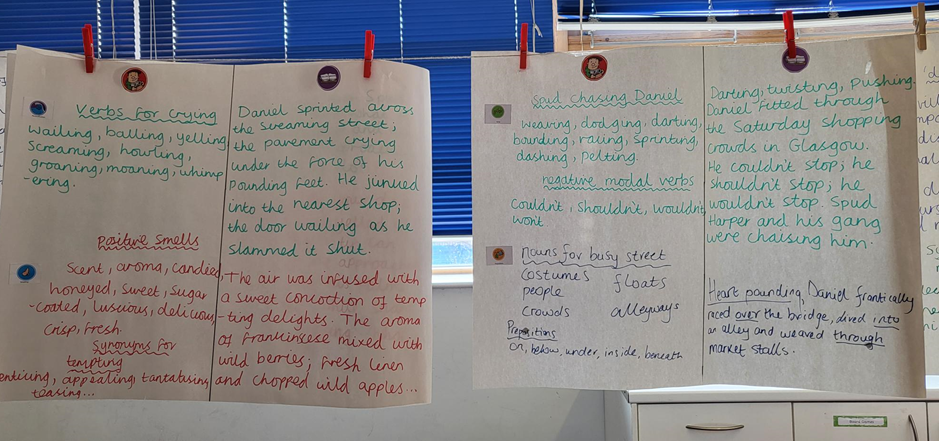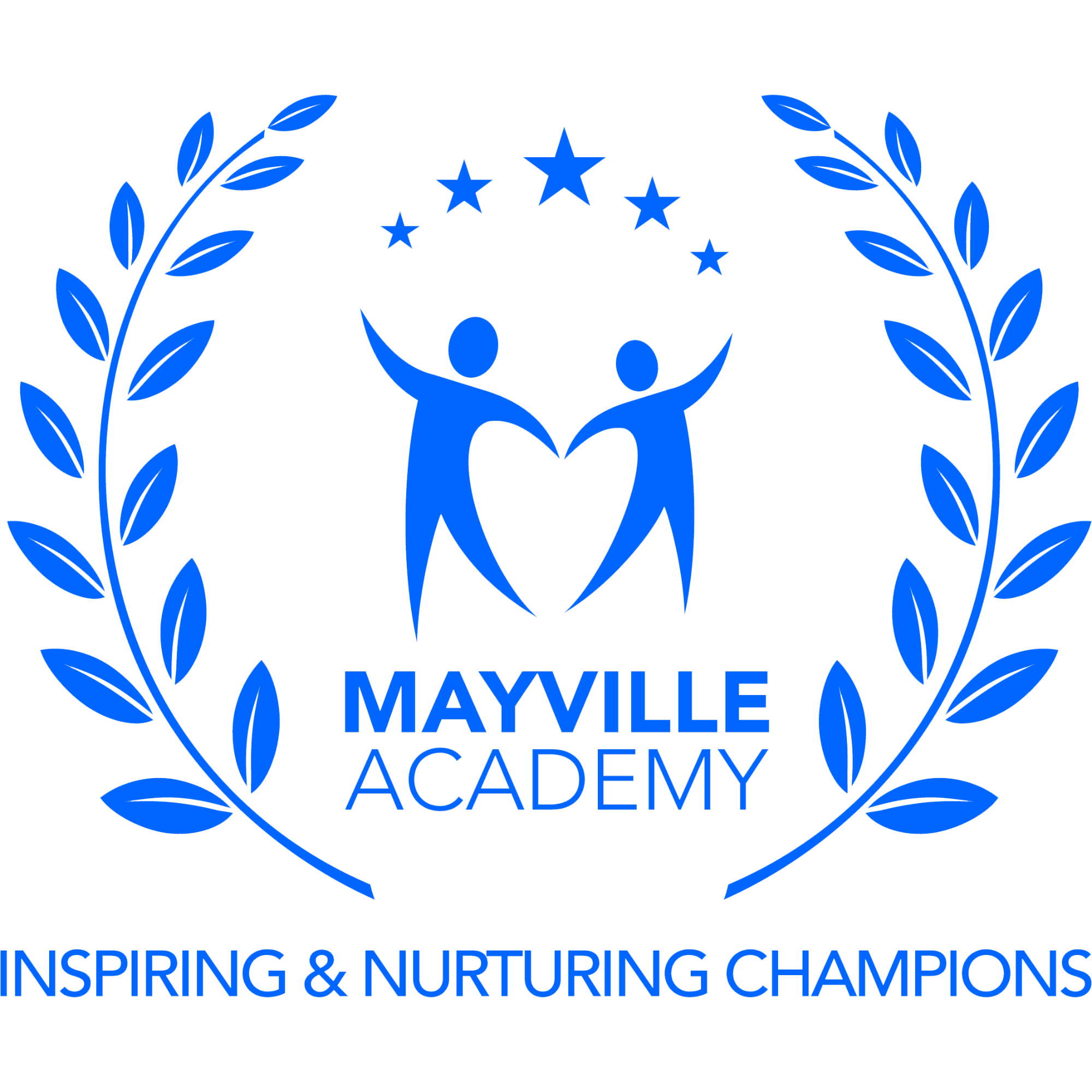Writing
Intent
Unlocking the writer in every child!
At Mayville, we understand how writing is a crucial skill, which will impact the future learning and development of a pupil in all aspects of their life. We aspire to prepare children with the essential writing skills they will need for later life by providing an enriched and engaging English curriculum, where they become creative writers with a clear purpose across all subjects.

We intend:
- To create confident writers who develop stamina for writing throughout school and are able to write at length.
- For all of our children to be autonomous writers, building on a range of skills as they work through each journey of writing.
- That all of our children are exposed to high quality texts that model excellent writing practises across a broad range of genres.
- For our children to have a secure understanding of the purpose of a text type, the purpose and intended impact of writing skills/tools and the ability to carefully select vocabulary with focus on the desired effect on the readers’ thoughts and feelings so that the impact of their writing is positive.
- Ensure that all pupils know how to plan, practise, evaluate their work as well as carry out an effective edit and improvement process using feedback from the teacher.
- That our children are challenged and motivated to take risks and view mistakes as a positive part of the learning process.
- To celebrate writing at each stage through the learning process to inspire children to take pride in their work.
- To provide a balanced and broad curriculum, which encompasses writing practice and equips children with the skills and knowledge of writing processes including handwriting, spelling, grammar, widening vocabulary and writing for different styles.
- To be inclusive of all children, including SEND by providing the appropriate scaffolding, support and writing tools those children need in their writing process to experience success.
- That our children have high expectations of themselves where they take pride in all aspects of learning and in everything they produce
Implementation:
Handwriting
We use Letter-join to teach children cursive handwriting. Cursive handwriting teaches pupils to join letters in words as a series of continuous flowing movements or patterns and children are taught cursive handwriting from Reception onwards. Words can be written without taking the pencil off the page.
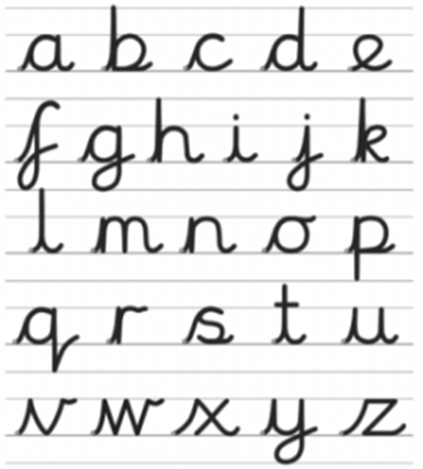
Pupils with specific learning disabilities find continuous cursive useful because the pencil stays on the page throughout every word, thus simplifying the movement. Children with motor problems learn a series of easy, rhythmical movements, which help to improve fine motor co-ordination.
Spelling
We believe that spelling has a direct effect upon progress in all other areas of the curriculum and is vital to developing a child’s confidence, motivation and self-esteem.
We provide children with a range of spelling strategies throughout school, which cater for different learning style. Early spelling is taught through phonic work in Early Years, Foundation and Key Stage 1 using Read Write Inc.
As children move from Key Stage 1 to Key Stage 2, the emphasis shifts from the teaching of phonics to more focussed teaching of spelling strategies, conventions and rules to build upon the children’s established phonic knowledge.
Writing Process
‘The Write Stuff’
At Mayville we aim for writing to be centred on a high quality text that captures the children's interest from the outset. The structure that we used to teach writing is a personalised approach based around best practice taken from 'The Write Stuff'.
Our main focus is placed on a love of story, enrichment and language in order to create ‘impact writers’. To engage our children in writing, we provide purposeful reasons to write where pupils learn to enjoy writing expressively, imaginatively and informatively for purpose. We make writing part of daily life, linked to play, fictional and real experiences. We encourage the children to develop personal voice, style, stamina and range as a writer.
We understand that developing children as writers is so much more than asking them to remember grammatical constructions or tricky spellings. It is a complex and intricate process – and if you enable a child to become a writer you have given them a voice, supported them to communicate and provided them with a skill that is vital for all of their schooling and to their life beyond.
“Why write? Writing crystallises your ideas. It preserves them for others. It reveals the facets of your thinking. Good writing is creating a gem for others to discover.” – Jane Considine, The Write Stuff
Writing in KS1 and KS2
The children follow a method called ‘sentence stacking’ which refers to the fact that sentences are grouped together chronologically or organisationally. This approach encourages the children to engage with short, intensive moments of learning that they can apply immediately to their writing.
The children learn to sentence stack, focusing on the style of the author and impact of words and sentences. The planning of these is based on the teacher’s assessment of the children’s learning needs. An individual lesson is based on a sentence model, broken into three separate chunks:

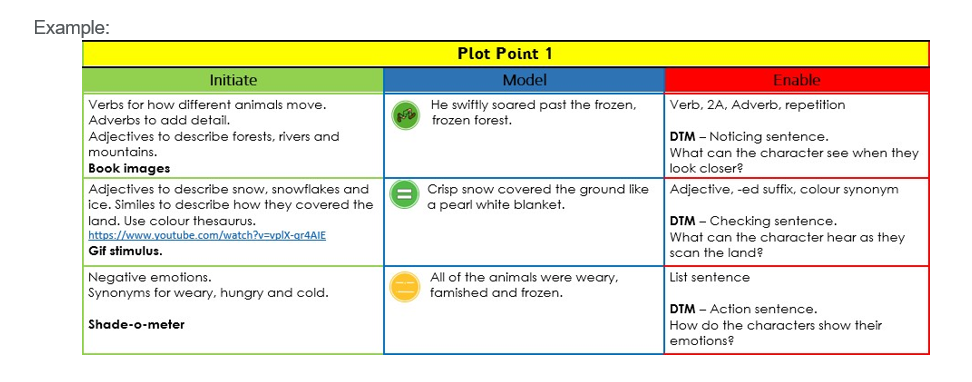
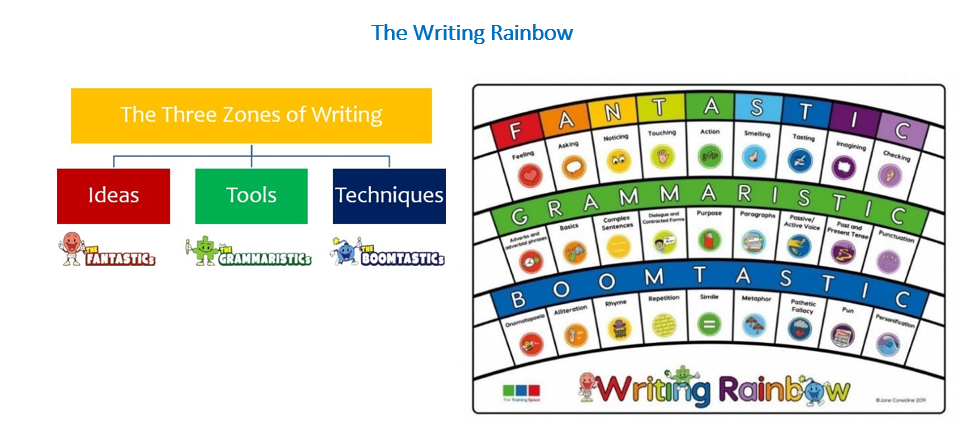
To be great writers, our children need to know about The Three Zones of Writing. These three essential components consist of: the FANTASTICs (Ideas); the GRAMMARISTICs (Tools); the BOOMTASTICs (Techniques).
These areas are vital to assisting the children through the writing process. Through the three zones of writing, we begin to take a systematic approach to helping the children very explicitly at every stage of their writing journey.
- The FANTASTICs help children to sharpen their understanding of their own and others’ writing by encouraging them to be observant and reflective.
- The 9 GRAMMARISTICs cover national curriculum requirements, capturing the broad spectrum of key grammar knowledge.
- The BOOMTASTICs capture the ten powerful ways to add drama and poetic devices to writing. They help children structure their work, teaching them to showcase their writing voice, demonstrate originality and to take risks in a bid to capture the truth of a situation
Editing Stage
The Revise Edit Type 1: These are often “little” adjustments or changes and tend to fall into one of these categories.
Spelling Missed or additional words Punctuation
The Rewrite Edit Type 2: This is crucial and particularly for primary age pupils’ thinking needs to be attached to sentence rewrites. A rewrite would be appropriate if a sentence doesn’t make sense, could be restructured or generally improved.
The Reimagine Edit Type 3: This is when a writer wants to add more sentences to develop an idea further. Pupils are often resistant about adding more as it presents the problem of where to fit additional sentences. This is an ideal opportunity to train pupils to use ‘editing flaps’.
Editing flaps are extra pieces of paper that stick onto their writing and show the additional sentences added into their work.
Editing sessions may comprise of children responding to their teacher’s written feedback or may be their own editing done using prompts or with a peer. A typical editing session may include some of the following activities:
In Year 6, all editing is done by themselves or with a peer selected by the teacher to ensure all work remains ‘independent’. It is not expected that other year groups in Key Stage 2 follow this model as there is no requirement for writing to be strictly independent prior to Year 6.
All editing in Key Stage 2 should be done in purple pen.
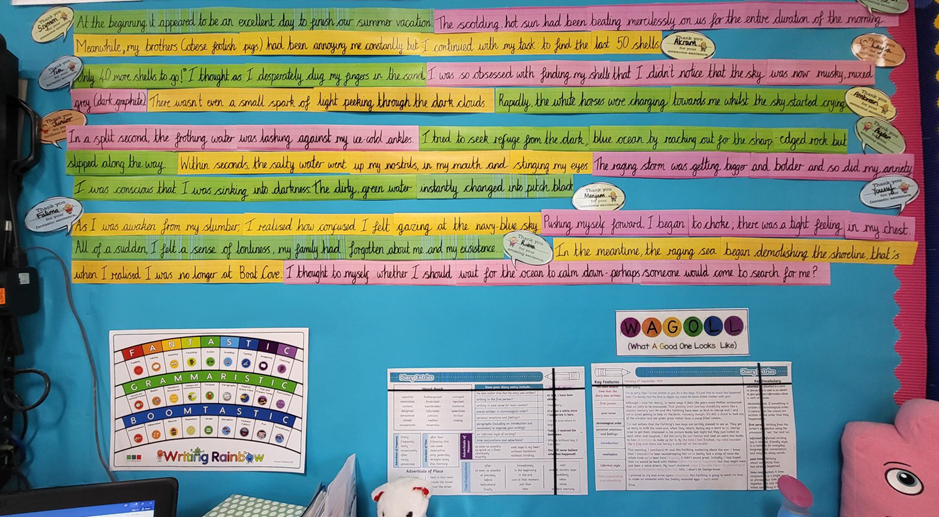
Publish
Publishing provides children with an opportunity to create a final version (or ‘best version’) of their own writing.
Children must be given an opportunity to rewrite some or all of their edited writing. Writing should be done using the same pen or pencil the child would normally use – not a ‘purple pen’.
Teachers may choose to complete published writing on ‘special paper’ or straight into their Big Write / Extended writing books.
As explained above, teachers may choose to use this as the final piece of writing to assess.
Working Walls
Working Walls are an extremely important part of the learning process as they provide children with a form of continuous provision, where they can refer to throughout the journey.
They provide detail on the skills that are taught, give explanations and model examples. During the process, the working walls are referred to regularly and often as a way of modelling their use. Children are aware of teachers using these as a form as of continuous provision and they link to their current learning and remain on the walls for as long as the children need.
